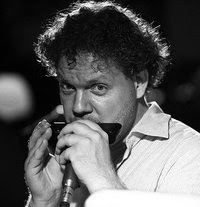
Dear subscribers,
I'm working on the OURO project on a daily basis. Had to do a lot of experiments to find the right production process. It seems that using the sequencer program (Logic Studio 9) too early in the process was a big mistake. It just makes it too hard to make compositional changes. So, the last two weeks I experimented with all the humanize functionality in Sibelius (music notation sofware) with wonderfull results. Actually, the music from "OURO - introduction" is the output from Sibelius, mixed with my harmonica playing. More on my studio setup in another article.
Listen for free
So, from a musical point of view, what's going on in "OURO - introduction" (version 0.5); you can listen to it for free at:
listen: www.myspace.com/wimdijkgraaf
inspirational context
The album OURO will be a very personal reflection of my life in Brasil since june 2008 (after visiting Brasil for about 8 years I decided to move to Ceará, the North East part of Brasil).
As I wrote in a previous article, the melodies and harmonies are based on the text "ordem e progresso" (just like the Miles Daves album "AURA" is based on the the name "Miles Davis"). "ordem e progresso" (order and progress) is the national motto of Brazil as written in it's flag. The motto Ordem e Progresso ("Order and Progress") is inspired by Auguste Comte's motto of positivism: L’amour pour principe et l’ordre pour base; le progrès pour but ("Love as a principle and order as the basis; progress as the goal"). It was inserted because several of the people involved in the military coup that deposed the monarchy and proclaimed Brazil a republic were followers of the ideas of Comte's thought.
How I transformed "ordem e progresso" into music?
There are many ways to transform words into musical elements. For the introduction, I used the circle of perfect fourth as a bases. There are actually 4 ways to organize the western 12 tone system with a 12 hour clock. 1) minor seconds, 2) major seventh (inversion of minor 2nd), 3) perfect fourths and 4) perfect fifths (inversion of perfect fourths).
I decided to start the album using the 3rd version; perfect fourths. So, the next step was to decide what alphabet to use. The Portugees alfabet doesn't include the letters "k", "w" and "y"; making it a 23 letter alphabet. Because the western tone systems concists of 12 notes, ideal would be to have a 24 letter alphabet; each tone representing 2 letters from the alphabet.
So, I decided to add the letter "w", to be able to use my first name in one of the other compositions for the album ... ;-)
In the included picture, you'll find the drawing I made as a result of these decisions.
In the next article, I'll explain how I distributed this material over the 6 minutes lasting composition "introduction".
Abraços,
Wim Dijkgraaf
composition & harmonica
e-mail: info@wimdijkgraaf.com
website: www.wimdijkgraaf.com
watch: www.youtube.com/wimdijkgraaf
listen: www.myspace.com/wimdijkgraaf

Geen opmerkingen:
Een reactie posten